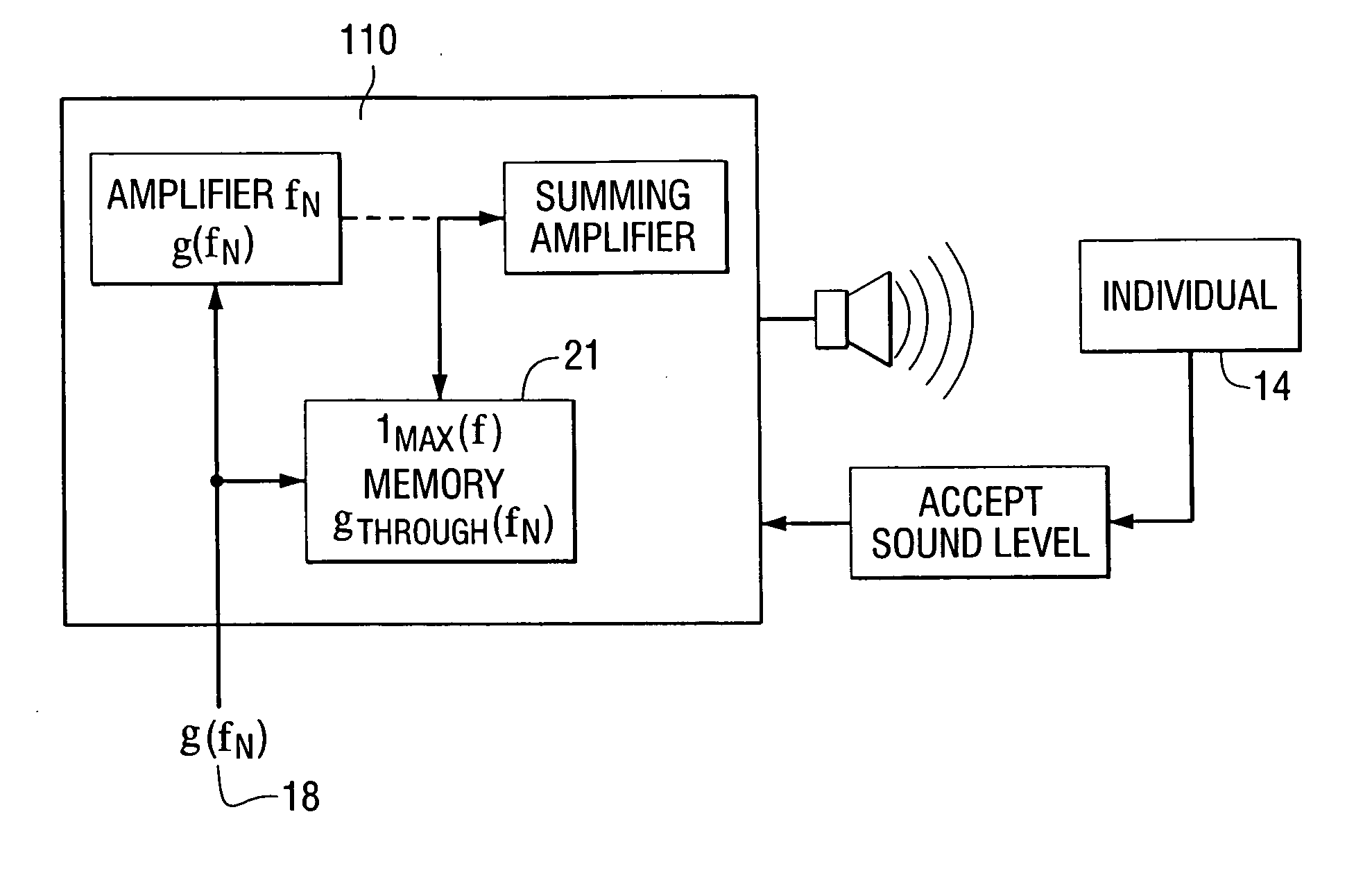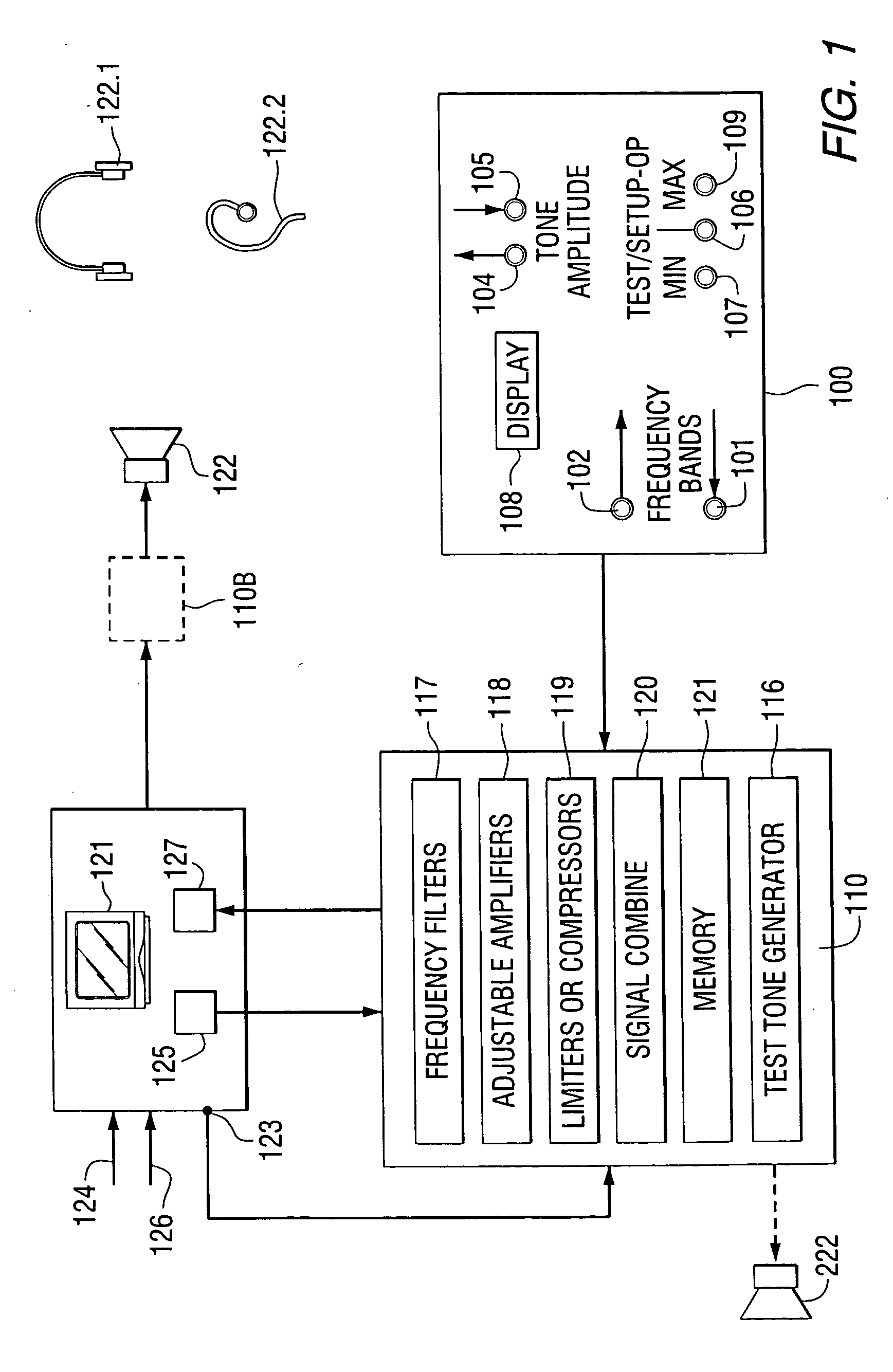Hearing ajustment appliance for electronic audio equipment
a technology for electronic audio equipment and adjustment appliances, applied in the direction of deaf aid adaptation, stereophonic circuit arrangement, diagnostic recording/measuring, etc., can solve the problems of physical discomfort, lack of effectiveness, pressure varies from individual to individual
- Summary
- Abstract
- Description
- Claims
- Application Information
AI Technical Summary
Benefits of technology
Problems solved by technology
Method used
Image
Examples
second embodiment
the invention includes incorporating the functionality of the first embodiment into new audio equipment. Rather than being physically separate from the audio system and the listening apparatus, the control and interface modules would be internal components of the audio system.
third embodiment
the invention involves modifying the first or second embodiment to include a microphone so that the audio system can present the subject with locally generated sounds which have been customized by the hearing adjustment profile, in addition to customized sounds from the system's original audio source.
fourth embodiment
the invention incorporates the functionality of the first embodiment into a hearing aid.
PUM
 Login to View More
Login to View More Abstract
Description
Claims
Application Information
 Login to View More
Login to View More - R&D
- Intellectual Property
- Life Sciences
- Materials
- Tech Scout
- Unparalleled Data Quality
- Higher Quality Content
- 60% Fewer Hallucinations
Browse by: Latest US Patents, China's latest patents, Technical Efficacy Thesaurus, Application Domain, Technology Topic, Popular Technical Reports.
© 2025 PatSnap. All rights reserved.Legal|Privacy policy|Modern Slavery Act Transparency Statement|Sitemap|About US| Contact US: help@patsnap.com



